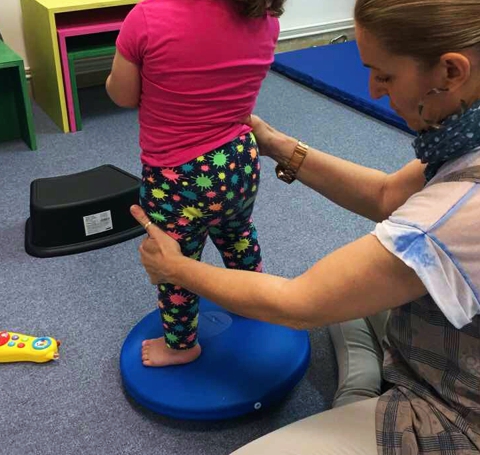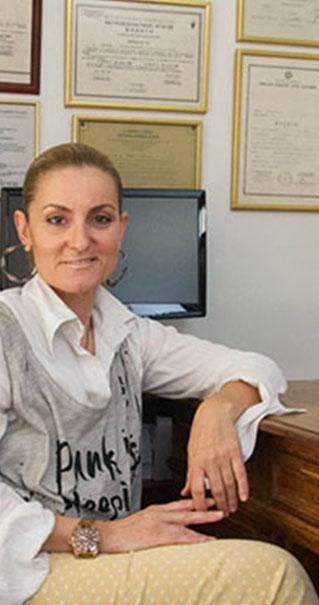Table of Contents
To see how speech and communication are affected in children with cerebral palsy, we must first look at what cerebral palsy is.
Brain surgery is an “umbrella” term for disorders resulting from a CNS (Central Nervous System) lesion. This brain damage, we must say, does not change and is not transmitted.
In cerebral palsy, due to damage to the CNS, the muscle tone of the body is affected. Muscle tone is our readiness to move against gravity. So since muscle tone is affected, it makes sense to affect both motor development and motor behavior.
Cerebral palsy affects the synergy and function of all muscle groups in the body. The movement of the tongue, cheeks and neck gives the person the opportunity for speech, chewing, swallowing and digestion. So if the movement in these structures of the body is affected in any way, it is next that there will be difficulty in the function of the mouth and esophagus.
The motor function of the mouth and throat has to do with chewing, swallowing, speaking and digestion. Disorder in motor synergy and motor function, due to cerebral palsy (damage to the CNS), affects the muscles of the whole body. Naturally, the above-mentioned structures are also affected.
In cerebral palsy, the center of speech in the brain is often affected. In a slight insult, the child may have difficulty pronouncing the words correctly. But in more serious insults the child may have trouble verbal expression of his want.
Oral motor function, in particular, depends on a complex process of sending and receiving messages from the brain to the various muscles of the face and neck.
Oral function is directly related to and influenced by the coordination of breathing, speech, chewing, swallowing and digestion. In cerebral palsy there is a mismatch in the function of these muscles associated with speech, swallowing and chewing.
In particular, these conditions affect the child’s ability to make sounds and form syllables. So there may be:
Impotence disorder: interruptions, such as stuttering, interrupt the flow of speech.
Voice disorders: There is an irregular rhythm, lack of volume control and voice quality that make it difficult for children to interact.
Dysarthria: Disorder of muscle movement in the tongue, lips and vocal cords leading to blurred or muted speech and delayed rhythm of speech.
Dysphagia: Difficulty swallowing or digesting food that causes bloating, coughing, salivation and reflux.
Aphasia: there is damage to the part of the brain that affects language and speech. This makes it difficult to speak, understand communication, read and write.
Oral expression: language processing and comprehension make it difficult to make sense of expression through verbal expression and communication.
Expressive Disorders: Difficulty combining words to convey ideas.
Cognitive communication disorders: Difficulty in communication skills that include perception, memory, problem solving and organization.
The speech therapist helps the child find a way to communicate through hints or meanings. They may also face issues such as word formation, pronunciation, listening and vocabulary development.
What is speech therapy?
Speech therapy helps to improve and enable communication between children with cerebral palsy. Communication skills in children organize interactive communication between them, the development of relationships, learning, work later, while increasing a child’s potential for independence and positively affects his quality of life.
Specialist speech therapists improve communication and speech, swallowing and digestion. Depending on what the child’s problem is, the speech therapist will help to find a way to communicate in alternative ways.
The speech therapist helps to organize the child’s mouth movements as well as communication skills. They use exercises that train the brain in voice, pronunciation, speech, sound, jaw and neck muscles. This helps not only the muscles of the mouth and throat but also the breathing and salivation, which can become two very important risk factors for the child.
The greatest contribution of speech therapy is to provide the child with a way of interacting with his family and all those who want to communicate. The child develops the ability to relate words to his environment and helps to understand concepts and facts and gives him the ability to express thoughts, desires and opinions.
In addition, speech therapy significantly expands the child’s understanding of the environment and the world around him, allowing him to experience different stimuli and reach his developmental milestones.
Speech therapy, as it improves a child’s communication skills and understanding, can better develop an emotional bond with parents and loved ones. In this way the child will be able to play an essential role in the family, in the community and ultimately in school and work as an integral part of them.
Neonatal and later infancy is a time when babies need to be able to explore their environment and interact with others. Speech therapy helps with this integration into the social environment through play and socialization occurs in the child’s routine. Communication opens opportunities for the child’s integration into society and his acceptance by others.
How is speech therapy done?
Children with cerebral palsy often have weakened muscles in the neck, mouth and jaw. The enhancement of speech and function of these muscles is done through training through speech therapy.
When speech therapy begins in infancy, issues beyond speech and communication can be addressed, including dysphagia and other physical issues.
Learning to breathe, speak and swallow – sometimes at the same time – involves one of the most complex coordination processes in these muscles. Improper execution can lead to drowning, aspiration and even pneumonia.
Speech therapy begins with the assessment of the child’s physical and cognitive abilities by a specialized speech therapist or speech therapist. While the recommendation of the researchers is the provision to start shortly after the diagnosis of a child with cerebral palsy, in our country the provision of speech therapy usually starts much later, approximately after the 2nd or 3rd year of life….
The speech therapist helps to organize clear speech, effective speech and control of the muscles involved in speech, food, drink and swallowing.
Speech therapy helps the child to communicate in a different way than usual, ie with words and voice. They can and do create an alternative way of vocabulary, and develop the child’s ability to “speak” through non-verbal means.
What are the benefits of speech therapy?
Communication is one of the necessary but also pleasant life experiences. Through our communication with other people we shape our personality and become members of a society.
Through communication with other people, we enjoy the benefits of experiences from our social life. Communication with others also shapes our perception of our lives and relationships. This happens from our birth and continues throughout our lives.
In the case of the child with cerebral palsy, communication does not always occur in the way we know. Children face challenges in their ability to communicate their thoughts and are at a disadvantage in relation to their peers and adults.
The speech therapist with the appropriate specialized techniques, will help the expression of speech and communication of the child, in the most helpful way. The benefit of such an intervention is that the child will learn to adapt and find new ways of communication.
Children with cerebral palsy often experience other developmental delays. But there are many children who have talents and abilities that they can not express properly due to speech and communication problems.
Speech disorders and how they affect the child vary. The speech therapist’s therapeutic strategy and the way the child will learn how to deal with their speech and communication problems is the responsibility of the speech therapist.
So especially the benefits of speech therapy are:
- helps with learning and education
- improves education
- increases the child’s confidence and independence
- improves socialization
- improves self-awareness
- Reduces contraction
Children with cerebral palsy have different abilities and different limitations. The speech therapy they do is a completely personalized therapeutic approach, based on their individual limitations. Thus each child works with his therapist on very specific issues that concern him and those that affect his own speech and communication.
Speech therapy also helps the child to:
- eliminate pronunciation issues
- apply the use of words correctly
- understand grammar
- develop control over the rhythm of speech
- use complex sentences
- expand vocabulary
- develop the ability to converse
- understand words and sentences
- improve memory and event recall
- draw and understand parallels between spoken and written language
If a child has a more serious injury, he or she may not be able to express himself or herself verbally and verbally. In this case, therapists will work with the child to benefit by learning to communicate in alternative ways.
Communication can be effective using some tools. These aids are varied. Some are based on technology, some are not. They use verbal cues, physical movement, sign language and communication cards.
Tools used to help speechless children include:
- Sign language
- paper boards or picture boards
- Computers and keyboards
- Specialized software
- Computer voice systems
- Auxiliary communication devices
A direct benefit of speech therapy for children with cerebral palsy is the ability to learn to work, while there may be a disorder in the muscles of the neck, jaw and mouth that are used for speech, but also for swallowing, eating, breathing and other bodily functions.
In any case where a child’s swallowing problems are related to neurological or cognitive deficits, the child will follow a program of exercises designed to improve complex muscle coordination.
How is speech therapy applied?
There are several methods used by speech therapists to treat speech and communication disorders.
- Joint Therapy – shows the child how to make the right sounds, sometimes physically manipulating the mouth or tongue.
- Blowing exercises – used to help the child breathe properly during speech.
- Deal with problematic sounds by pronouncing words or sounds of vowels and consonants in quick succession.
- Linking language and words – using pictures, objects and books to help the child expand their vocabulary, to learn to pronounce the word correctly and to understand its meaning and purpose. Often, a physician will ask the child to use an object or play with it, so that the child makes a connection between the word and its meaning.
- Language exercises – language enhancement and teaching the correct language placement required for specific sounds.
- Breathing exercises – regulate breathing so that the child develops disciplined speech and at the same time an organized rhythm of breathing.
- Jaw exercises – strengthen the jaw to support proper speech and the ability to chew food and drink fluids safely.
Children are often taught sign language or gestures to communicate with others when they have no speech. However, advances in technology have proven to be particularly effective in enabling children to communicate safely and successfully by compensating for gaps in their abilities.
Speech therapy deals not only with the act of speaking, but also with the ability to understand language. A speech therapist will also deal with word formation, pronunciation, listening, vocabulary development and direct conversation skills.
If a child has no speech the speech therapist can also help identify other ways in which the child can express himself or herself to promote human interaction. This will happen through the use of gestures, symbols, touches, picture boards or technology-based methods as already mentioned.
Speech therapy for children with cerebral palsy can begin as early as infancy. Speech therapy for babies is especially important to help the brain develop skills that it can not later in life. Early speech therapy can help your child develop new skills.
Aikaterini Ziaka Physiotherapy Thessalonki

